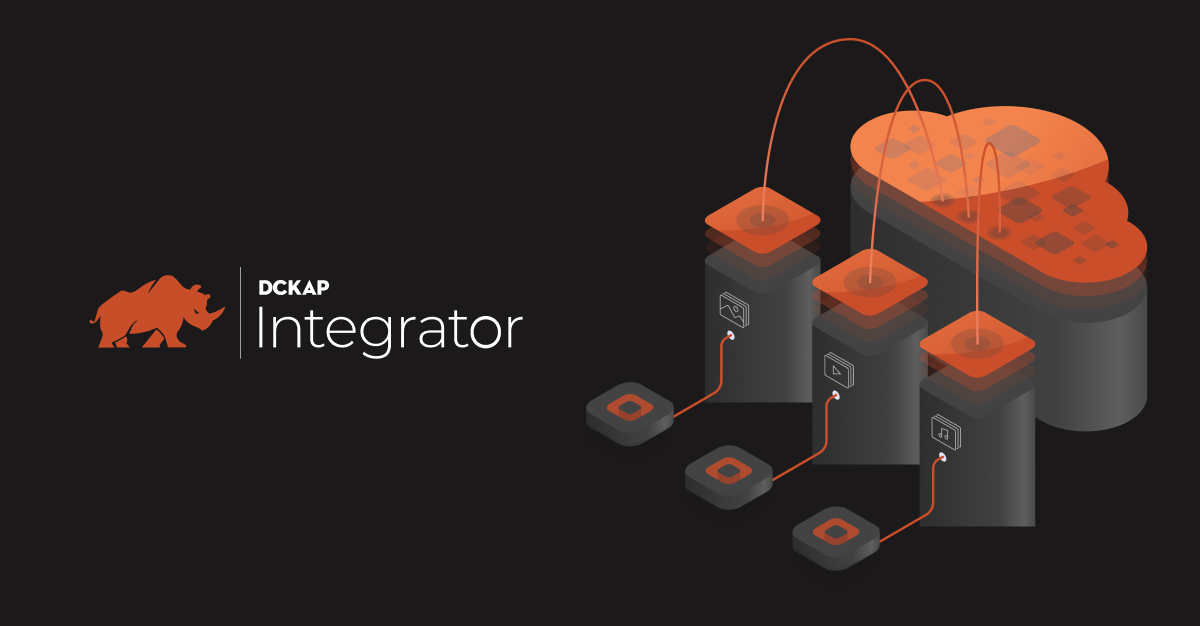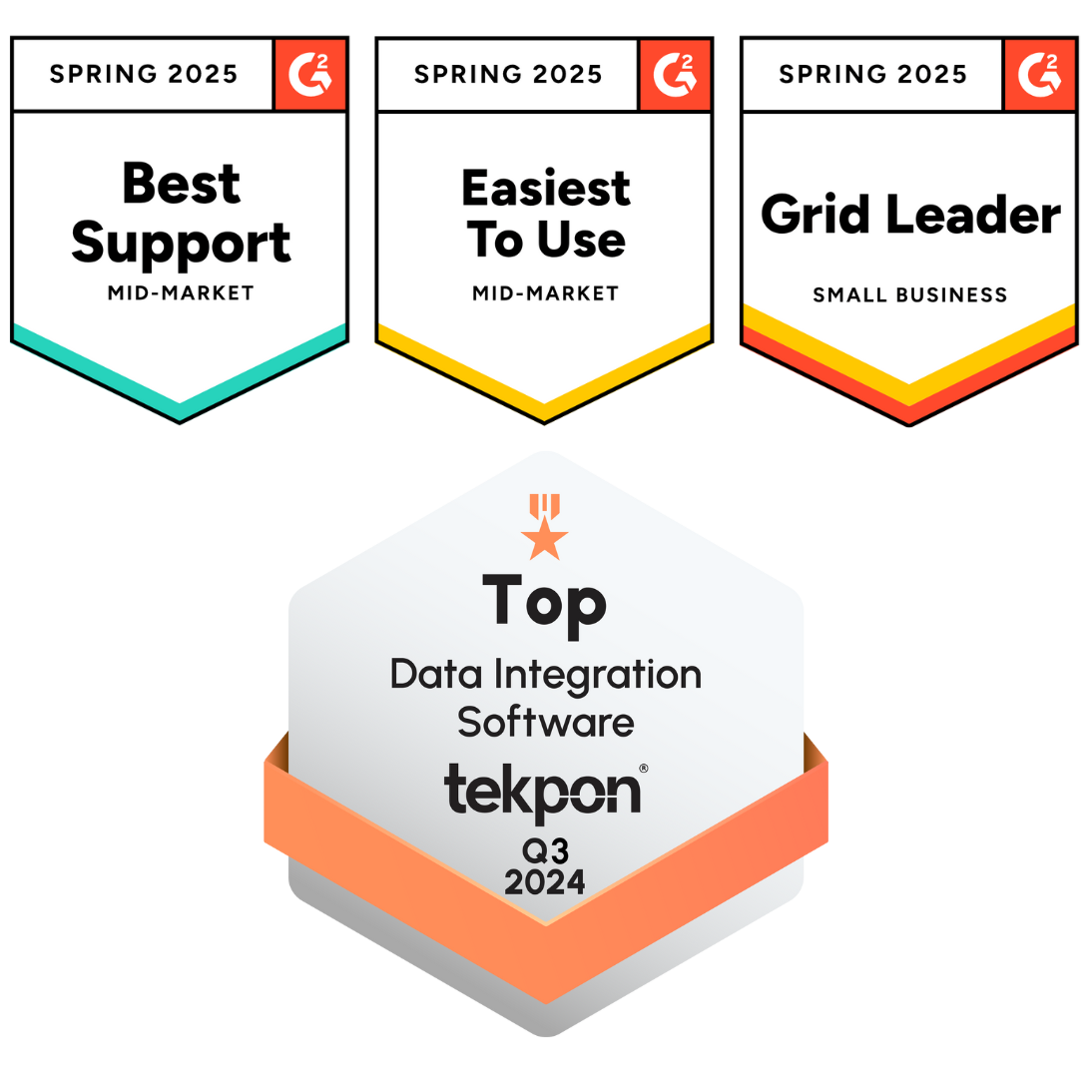It’s not uncommon for businesses to have orders come in through one system, and have inventory tracked in another, all while accounting lives somewhere else entirely. That leads to a lot of copying, pasting, and double-checking just to keep things moving.
Despite specific roles, your departments weren’t designed to work in isolation, and the same should go for their software applications. When they do, small disconnects add up to slower decisions, frustrated teams, and missed opportunities.
Ensuring Seamless Connectivity Within Your Business Stack
Once businesses realize how smoothly their operations could run with connected systems, the next hurdle that usually appears is implementation.
Most integration approaches come with their own set of complications. A separate integration tool for each system connectivity. A team to manage APIs. Vendors to coordinate with. System experts to handle backend scripts. It’s a lot of moving parts and even more back-and-forth.
For B2B businesses in particular, where ERPs form the core of daily operations from order management and inventory tracking to finance and customer data, the process can get even more draining. Instead of helping teams work faster, disjointed integration efforts often slow everything down. And what should have made the business more efficient ends up adding more work than the systems themselves.
That’s exactly why more businesses are starting to rethink their approach by putting the ERP software at the heart of their integration strategy.
Here’s Why Businesses Are Putting Their ERP At The Heart Of Their Operations
The ERP solution isn’t just one of many tools, it’s the system that drives the business. Orders, inventory, invoices, shipping, customer data, it all flows through the ERP. And when this system sits disconnected from the rest, everything around it starts to fall apart.
That’s why more businesses are choosing to build their integrations around the ERP, treating it as the single source of truth. And when done right, it transforms how the entire business operates. Here’s how:
- When your ERP system is the hub, it’s easier to plug in new tools without restructuring your entire setup. The ERP remains the foundation, and everything else connects to it, cleanly and efficiently.
- Since most transactions pass through the ERP, syncing it directly with payment systems, order portals, and accounting software ensures your numbers stay accurate without manual entries or double-checking across teams.
- Sales, customer support, and warehouse teams, they all rely on ERP data. When all systems feed into and pull from a single ERP, everyone’s working with the same up-to-date information, without needing to ask around or chase updates.
- With consistent, ERP-led data trails across systems, audits become easier to manage. Financial and operational reports are more reliable, and tracking down historical records is quicker.
And the key to making this ERP-first approach successful is a tool that understands this logic and simplifies the connections around it.
That’s exactly where DCKAP Integrator comes in.
Features That Move The Needle For Operational Efficiency
There are only a handful of tools that deliver the kind of ease and efficiency that businesses need on a daily basis. DCKAP Integrator stands out not just for what it connects, but for how smoothly it helps your business operate behind the scenes.
Here’s a look at the features that actually make a difference:
1. Complete Operational Visibility
All your connections, performance metrics, and workflows are centralized in one place. No more switching between the tabs.
2. Advanced Mapping and Flow Customization
Businesses rarely have the same data structure across various systems. DCKAP Integrator’s flexible mapping engine lets you customize data flow field by field to match exactly how your business runs.
3. Smart Logging and Instant Error Alerts
If something breaks, you’ll know. The platform logs every action and flags any disruption immediately through real-time alerts. No more chasing issues hours after they happen.
4. Clean, Intuitive Dashboard
You don’t need to be technical to use it. The dashboard is designed to make navigation simple, even for first-time users. You can track connections, monitor syncs, and manage data exchange at a glance.
5. Ready-to-Use Connectors
DCKAP Integrator has prebuilt connectors for systems like Epicor p21 that speed up setup. You spend less time configuring and more time operating.
6. Robust Scheduling & Automation
Automate recurring data flows, set sync intervals, and run workflows without human intervention. Once it’s set, it runs without any follow-up.
7. Scalability Built-In
As your tech stack grows or shifts, the Integrator scales with it. You can plug in new systems without reworking everything from scratch.
8. Secure Data Handling
Built with enterprise-grade security standards, so every bit of business data moving through the platform stays protected.
9. Multi-System Compatibility
Supports a wide variety of systems from industry-specific ERPs, CRMs, EDI, marketing, accounting systems to niche tools, ensuring nothing in your stack is left out.
10. Hands-On Support When You Need It
Beyond the product, there’s a team ready to step in when required. Whether it’s onboarding, setup, or troubleshooting, help is always within reach.
Why Hands-Free Integration Is Best For Businesses
When integration is hands-free, it doesn’t just save time. It unlocks real, measurable advantages across the business.
Here’s how a solution like DCKAP Integrator creates long-term value:
Better Use of Internal Resources
Instead of pulling your team members into technical troubleshooting or manual syncs, they can focus on what they do best, whether it’s business operations, customer service, or sales. No wasted hours. No internal bottlenecks.
Faster Time to Value
Since the setup is handled by experts and the onboarding is smooth, you start seeing results quickly. You don’t spend months on time-consuming tasks or trying to “make things work.” It just works right from the start.
Consistent, Reliable Data Across Systems
When systems are integrated properly, you don’t get mismatched order details, outdated inventory, or inconsistent customer data. Everything flows in real-time, keeping all departments on the same page.
Fewer Errors, Less Rework
Manual entry and disconnected systems often lead to mistakes: missed orders, incorrect invoices, and inventory mismatches. Integration drastically reduces human error and the time spent fixing it.
Reduced Dependency on Internal IT
Not every distributor or manufacturer has a full IT team in-house. And they shouldn’t have to. With a solution like DCKAP Integrator, businesses don’t need to rely on tech specialists for every little change.
Improved Customer Experience
When systems talk to each other, your response times get faster, you have accurate information in hand, and your team has more visibility. Customers notice the difference, and they come back.
A Clearer View of the Business
Integrated systems mean better reporting, smarter insights, and more confident decisions. Instead of scattered data, you get a full, connected view of your business processes.
Long-Term Cost Savings
Yes, integration is an investment, but it’s one that pays for itself. With fewer errors, better productivity, and no need to constantly fix or patch things, the cost savings are real.
Peace of Mind
Finally, when your different systems are connected and your data is flowing seamlessly, there’s less stress, fewer surprises, and more control over your business.
Overcoming Integration Challenges with DCKAP Integrator
While integrating systems is a necessary step toward streamlining various business functions, it’s not always as simple as it sounds. Businesses frequently encounter challenges: some expected, some not so much. But the right integration tool can transform these hurdles into smooth processes.
Here’s a look at some common challenges faced during system integration and how DCKAP Integrator addresses them head-on:
1. Data Inconsistency Across Systems
When you’re working with multiple systems, data doesn’t always align perfectly. Customer information, inventory levels, and sales data might be structured differently in each system. This misalignment causes delays, errors, and frustration across departments.
How DCKAP Integrator Solves It:
DCKAP Integrator’s advanced mapping engine ensures seamless data flow by allowing you to map and customize each field to suit your system’s requirements. Whether it’s a customer order, inventory update, or shipment tracking, the platform guarantees consistency across every integrated system, eliminating mismatched or outdated data.
2. Lack of Real-Time Data Syncing
Many traditional integration methods don’t provide real-time syncing, causing delays and affecting decision-making. If your ERP doesn’t talk to your CRM or accounting system in real-time, you’re forced to work with outdated information and data silos, which can lead to costly mistakes.
How DCKAP Integrator Solves It:
With real-time data syncing, DCKAP Integrator ensures that all your business applications are updated simultaneously. This means you’re always working with the latest information, whether it’s on inventory levels, order statuses, or customer updates, allowing for faster decision-making and improving business agility.
3. Complex Technical Setup
For many businesses, the thought of setting up an integration platform sounds like a technical nightmare. The idea of hiring extra resources or dealing with a complex setup process can be overwhelming, especially when you just need things to work.
How DCKAP Integrator Solves It:
Unlike many integration tools, DCKAP Integrator comes with a simple, intuitive dashboard that doesn’t require technical expertise to use. The onboarding process is straightforward, and the integration team handles the tough job. No need for specialized IT resources, just provide the necessary documents, and the expert team takes care of the integration process.
4. Scaling as the Business Grows
As your business grows, your tech stack will likely evolve too. Whether you need to integrate a new ERP, add a CRM, or bring in a supply chain management system, the last thing you want is an integration solution that can’t keep up with your expanding needs.
How DCKAP Integrator Solves It:
DCKAP Integrator’s scalability means it’s built to grow with you. The platform allows you to easily add new systems without redoing everything. It supports multiple systems, configurations, and environments, ensuring that as your business expands, your integration remains efficient and uninterrupted.
5. Security Concerns with Data Handling
Data security is a primary concern for businesses, especially when integrating systems that share sensitive customer, financial, and inventory data. Ensuring that this information is protected at every stage is critical.
How DCKAP Integrator Solves It:
DCKAP Integrator adheres to enterprise-grade security standards to ensure that your data remains protected during transfer. The platform uses secure protocols to handle all data movement, making sure that your business information is safe and complies with industry regulations.
6. Lack of Flexibility with Pre-Built Connectors
Some integration tools come with rigid connectors that may not fit your exact needs. If your systems don’t match exactly with the tool’s predefined connectors, you might find yourself needing extra customization, which adds complexity.
How DCKAP Integrator Solves It:
DCKAP Integrator offers customizable connectors that are designed to adapt to your specific business needs. Even if you use niche or unique systems, DCKAP Integrator can handle it, giving you flexibility to connect any platform without limitations.
7. Unclear Monitoring and Reporting
Without clear visibility into your integration, you can’t track progress, identify issues quickly, or ensure that your systems are running optimally. Poor visibility can result in inefficiencies, with problems going unnoticed until it’s too late.
How DCKAP Integrator Solves It:
With its intuitive dashboard and comprehensive reporting tools, DCKAP Integrator provides full visibility into the performance of your integrated systems. You can track every connection, monitor data flows, and receive detailed reports, so you’re always in control.
8. High Total Cost of Ownership (TCO)
Many integration solutions have hidden costs, including licensing fees, support charges, and additional resources for troubleshooting. Over time, these costs can add up, making the total investment much higher than expected.
How DCKAP Integrator Solves It:
DCKAP Integrator helps keep your costs in check with a transparent pricing model that doesn’t involve additional fees. Plus, the hands-free integration means less reliance on internal IT teams and external consultants, keeping your costs low while providing value.
9. Limited Customer Support
When problems arise during or after integration, businesses need timely and effective support. Without prompt assistance, integration issues can linger and disrupt operations, leading to frustration and delays.
How DCKAP Integrator Solves It:
DCKAP Integrator is not just a product, it’s a full-service solution. Our customer support team is always ready to help, ensuring you receive assistance whenever you need it. From setup to troubleshooting, we’ve got your back.
Real-Life Scenarios: How DCKAP Integrator Streamlined Business Workflows
DCKAP Integrator has helped multiple manufacturers and distributors streamline their workflows by connecting their key business systems. From ERPs to CRMs, ecommerce platforms to marketplaces, the integrator ensures smooth data flow between systems, reducing manual processes and improving efficiency.
Here are just a few examples of how DCKAP Integrator has made a difference for businesses:
Systems Integrated: Epicor Prophet 21 ERP <> Payment Platform
Systems Integrated: 3M Marketplace <> Epicor Prophet 21 ERP
Systems Integrated: EvolutionX <> Microsoft Navision
Systems Integrated: Magento <> Epicor <> HubSpot
Read all the case studies here.
These are just a few examples of how DCKAP Integrator has transformed business workflows for companies across industries. Whether it’s connecting multiple systems or handling complex integrations, DCKAP Integrator offers a comprehensive solution that enables businesses to focus on growth while leaving the technical details to the experts. To know more, get in touch with us!
FAQs
What does integrating your ERP mean, and why is it important?
Integrating your ERP (Enterprise Resource Planning) system means connecting it with other software tools like eCommerce platforms, CRMs, HR systems, or accounting solutions. This ensures real-time updates, seamless data exchange, and better visibility across departments. Proper ERP integration eliminates manual work, improves data integrity, and helps businesses, especially small and mid-sized enterprises, make faster, data-driven decisions.
What are the common methods of ERP system integration?
Some common ERP integration methods include:
- Point-to-point integrations: a direct connection using APIs (application programming interfaces) or custom code
- Custom integrations: Using APIs but built in-house for specific use cases
- Electronic Data Interchange (EDI): for standardized data exchange between businesses
- Middleware (Enterprise Service Bus or iPaaS platforms): for hassle-free and broader integration strategies
The right approach depends on the specific business needs.
What are the benefits of ERP integration for a growing business?
The benefits of ERP integration are extensive:
- Centralized system for inventory management, financial reporting, and customer records
- Improved team collaboration through real-time access to updated data
- Less manual data entry, reducing human errors
- Better resource allocation and business forecasting
Ultimately, it enables a fully integrated ERP system to function as the core business management software.
What are the types of ERP integration?
Modern ERP systems can integrate with a wide range of business tools:
- Customer Relationship Management (CRM) platforms
- eCommerce platforms (like Shopify, Magento, or EvolutionX)
- Human Resource Management systems
- Business Intelligence tools
- Legacy systems still in use by many large enterprises
- Project management tools, payment gateways, and more
The right method and tools make integration flexible and scalable.





